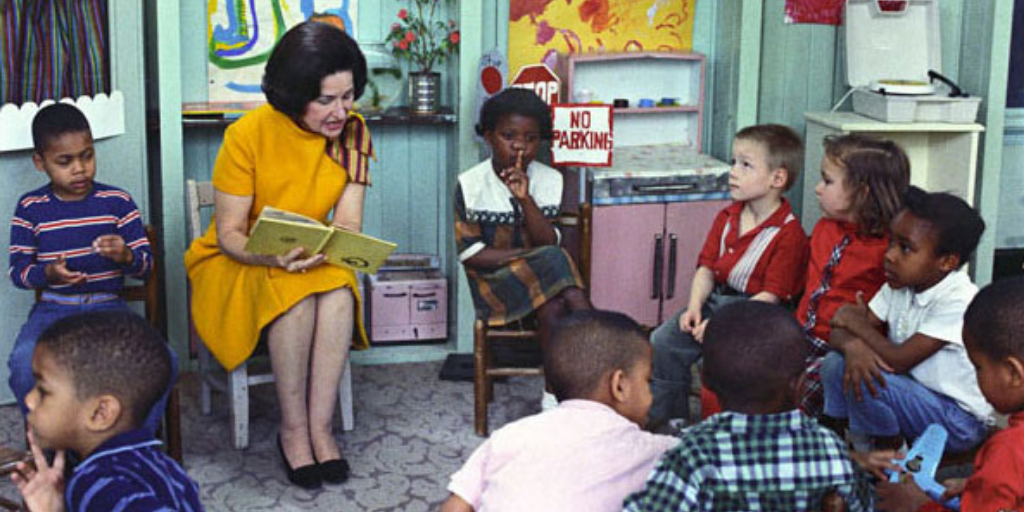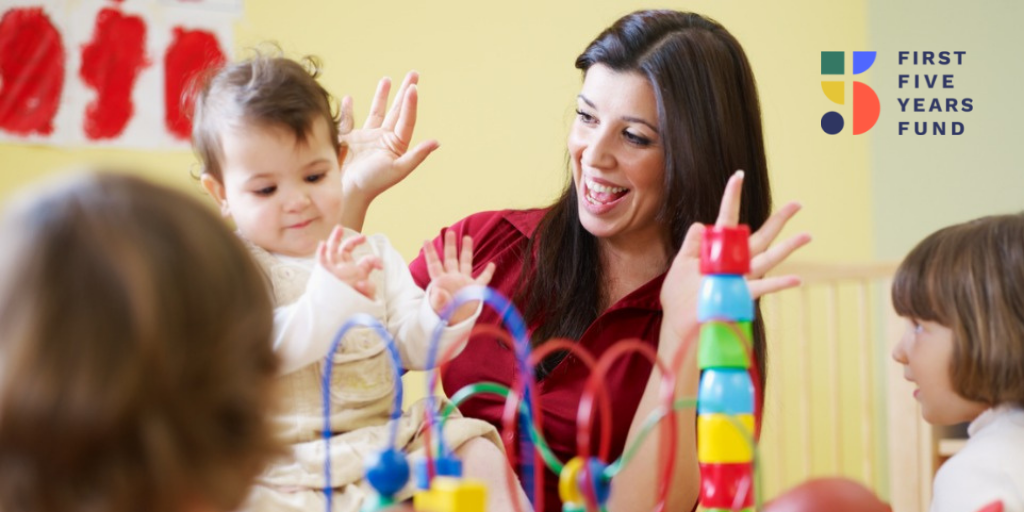A Brief History and Overview of the Head Start Program

For over 50 years, Head Start has served millions of children and families living in poverty through comprehensive early learning, health, nutrition, and family support services.
This October, as we once again celebrate Head Start Awareness Month, FFYF will be sharing a series of blogs highlighting many of the benefits of the Head Start program. To understand the full impact of the program, it is important to understand its history.
History: 1965 to Today
As part of President Lyndon B. Johnson’s ‘War on Poverty,’ Head Start was conceived based on the recommendations of a panel of childhood development experts who created the Cooke Report as a “blueprint” for what would soon become Head Start. What started as a Summer program by the Office of Economic Opportunity, with the goal of breaking the cycle of poverty through the care and education of 561,000 children, Head Start has since served more than 37 million children and their families.
In 1969, Head Start moved from the Office of Economic Opportunity to the Office of Child Development in the U.S. Department of Health, Education and Welfare, and is now within the Administration on Children, Youth and Families (ACYF) in the Department of Health and Human Services (HHS). Head Start is now a full-fledged federally funded program that delivers comprehensive early learning, health, nutrition, and family support services to children ages 3 through 5 living in poverty. Subsequently, the Clinton administration expanded the Head Start program to serve infants and toddlers through Early Head Start, but we’ll get to that later this month.
There are more than 1,700 local Head Start programs operating across America, in every state and Congressional district in the country. In light of this, there is significant diversity across the communities in which the program operates—rural, suburban, urban, migrant and seasonal, and those found on American Indian and Alaskan Native (AIAN) reservations. Because of the overwhelmingly positive impact the program has had over the past 5 decades, Head Start enjoys broad bipartisan support among voters – and lawmakers on Capitol Hill.
For a more comprehensive history of the Head Start program, visit the Office of Head Start’s interactive timeline.
Overview of the Program
As it stands today, decades of research show that participation in Head Start has both short- and long-term positive effects for Head Start children and their families. Children who attend Head Start demonstrate marked academic and social progress, and are more likely to enter kindergarten ready to learn. Research also shows that Head Start program quality has improved dramatically over the past 10 years. This is due, in large part, to Congress passing bipartisan Head Start legislation in 2007 that included policies designed to strengthen teaching in Head Start programs and improve coordination between Head Start and other early childhood programs.
The goal of Head Start programs nationwide is to “promote school readiness of children ages birth to five from low-income families by supporting the development of the whole child.” In addition to serving young children, Head Start also provides services and programs for the whole family, utilizing a two-generation approach to pull communities out of poverty.
The services include but are not limited to:
- Early learning: providing care and education for young children to prepare them for school.
- Health: Ensuring that children are reaching developmental landmarks and have access to the nutrition they need to thrive.
- Family well-being: Assisting families in supporting one another and reaching their goals so they are all able to succeed.
Head Start has also expanded to include Early Head Start (EHS) which serves infants, toddlers, and their families as well as Early Head Start-Child Care partnerships (EHS-CCP) which build on the existing strengths of both programs. Each will be later topics in our blog series this month.
For more on Head Start visit our issue page, the Office of Head Start (OHS), or the National Head Start Association (NHSA).
Subscribe to FFYF First Look
Every morning, FFYF reports on the latest child care & early learning news from across the country. Subscribe and take 5 minutes to know what's happening in early childhood education.


